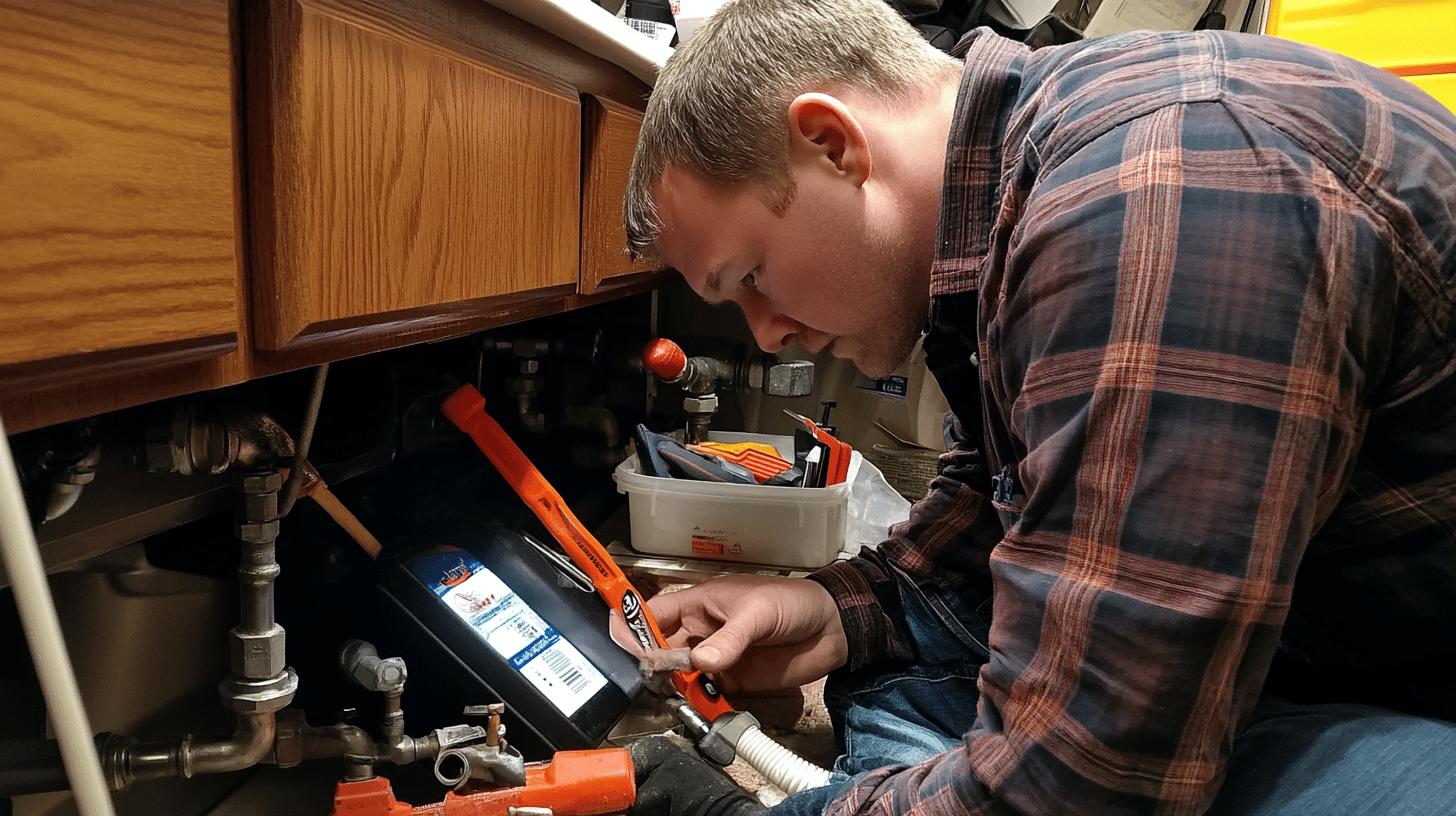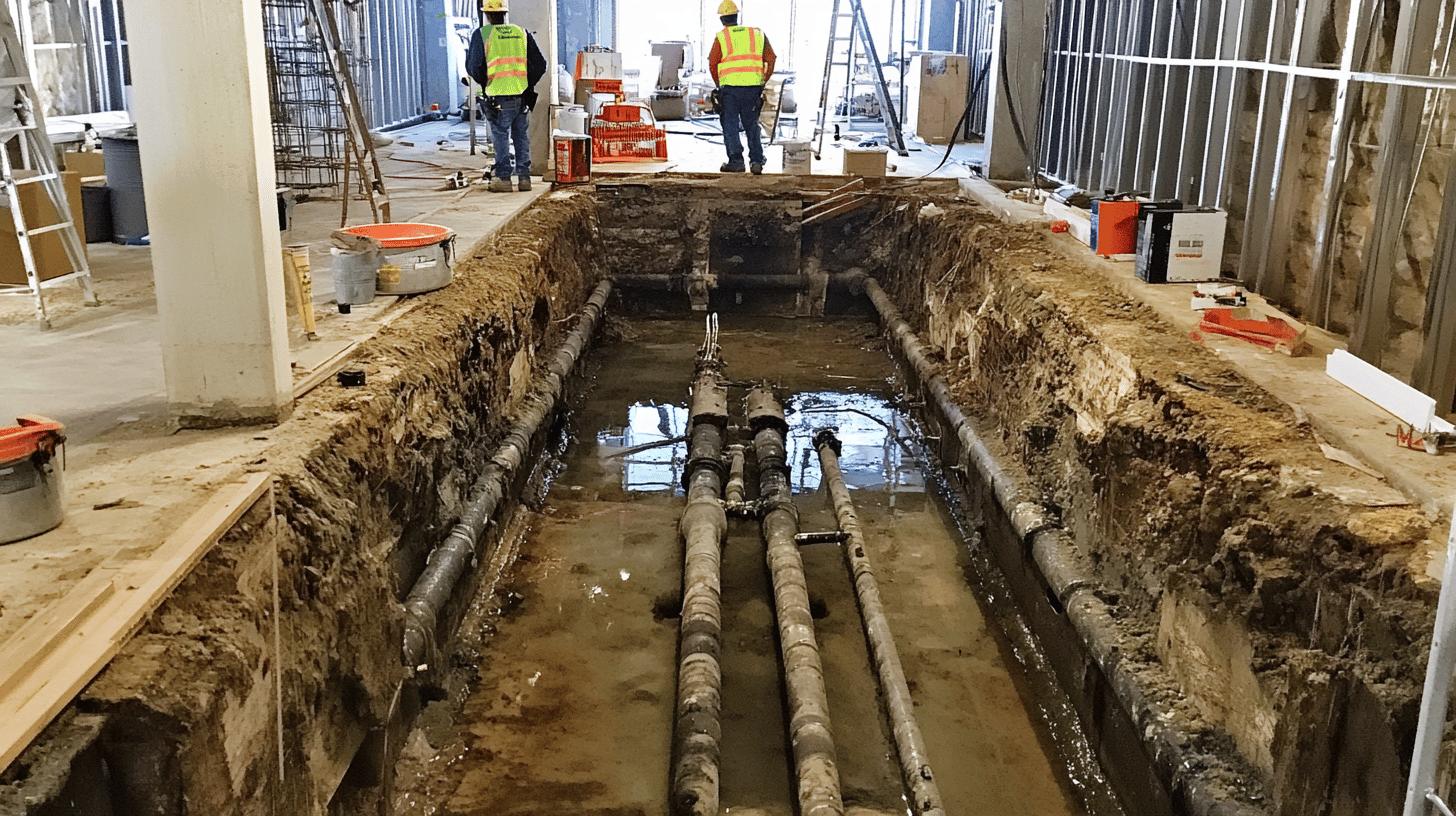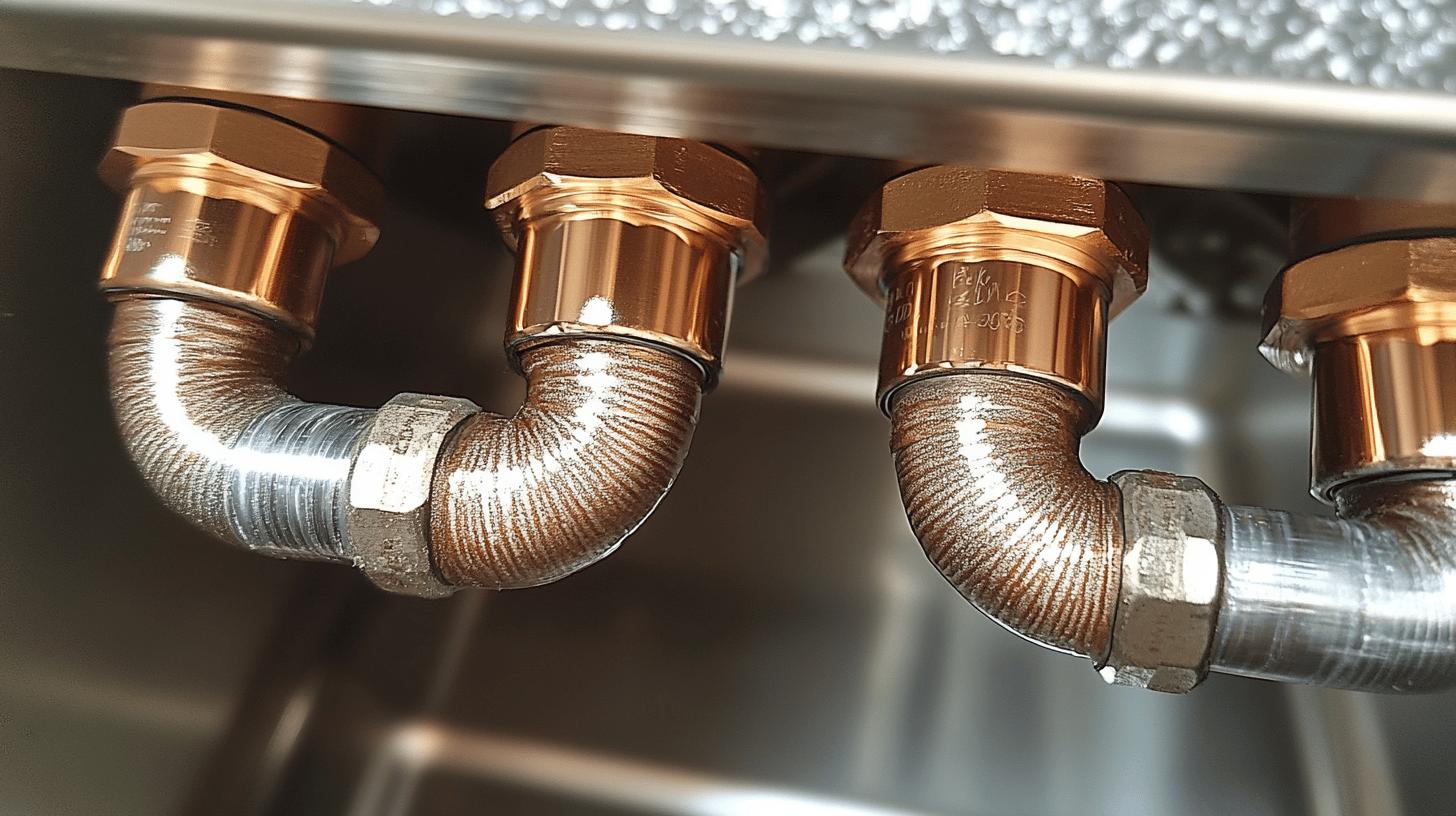TL;DR:
- S-traps patented in 1775; common in older homes, non-compliant with modern codes.
- P-traps more efficient, compliant, and reduce siphoning; preferred in modern plumbing.
- S-traps: easy installation, space-saving, but prone to siphoning and risks indoor air quality.
- P-traps: effective water seal, versatile installation, improved air quality, require precise setup.
- Installation challenges differ; professional help recommended for both types.
- Regular maintenance prevents blockages and gas leaks; professionals handle complex issues.
- S-traps often violate codes, P-traps meet safety standards; inspections crucial for compliance.
Have you ever noticed why some homes smell better than others? It might have to do with the plumbing traps under sinks and tubs. The difference between S-traps and P-traps isn’t just about how they look—it’s about how well they work. Many older homes still use S-traps, but they’re not as popular anymore because they can cause siphoning problems. On the other hand, P-traps are the top choice for preventing sewer gases from coming inside. Let’s check out the pros and cons of these plumbing traps to see which one really helps keep your home healthier.
Understanding S-Traps and P-Traps
S-traps were patented way back in 1775, and both S-traps and P-traps play a key role in plumbing. They stop sewer gases from getting into homes by holding water to block those odors. While both types use water for this, they work differently. S-traps are often found in older homes because they’re easy to install and compact. However, they can easily lose their water barrier, which makes them not up to code with many current plumbing regulations.
The main difference between S-traps and P-traps is their shape. S-traps have an “S” shape and a longer drop, which can cause siphoning issues and result in losing the water seal if they aren’t vented properly. P-traps, on the other hand, look like a “P” and have a horizontal arm that connects to a vent. This setup reduces siphoning and keeps the water seal reliable, making P-traps the better choice for modern plumbing.
Today, P-traps are the standard because they’re efficient and comply with plumbing codes. Their venting system helps maintain the water seal, which lowers the risk of sewer gas leaks. This not only improves indoor air quality but also meets modern safety standards, making P-traps the go-to choice for homes and businesses.
- S-trap shape and design
- P-trap shape and design
- Common uses in residential plumbing
- Typical materials used for each trap
- Basic function of both traps
Pros and Cons of S-Traps

S-traps are super easy to install and save space because of their vertical design, making them a great fit for tight spots, especially in older homes. Their simple design means you can get them in quickly, which can save time and money when you’re doing renovations or repairs.
However, S-traps have some serious downsides, especially with siphoning issues. The vertical drop can completely drain the water seal, which lets sewer gases leak into your home. This can mess with indoor air quality and even pose health risks. Because of these problems, many plumbing codes now regulate or ban S-traps altogether. They just don’t meet today’s safety and performance standards, which is why they’re used less and less.
| Advantage | Disadvantage |
|——————————–|——————————————–|
| Easy installation | Prone to siphoning |
| Space-saving vertical design | Loss of water seal |
| Ideal for tight spaces | Non-compliance with modern plumbing codes |
Pros and Cons of P-Traps
P-traps are the go-to choice in modern plumbing because they keep water seals intact and cut down on siphoning. Their built-in venting system blocks sewer gases from coming into your home, which is important for meeting building codes. This gives homeowners peace of mind knowing their plumbing is safe and compliant.
One of the great things about P-traps is that they can be installed both horizontally and vertically, making them perfect for different plumbing setups in homes and businesses. They also help improve indoor air quality by preventing gas leaks, and their solid water seal means fewer maintenance problems, boosting overall efficiency.
However, P-traps need to be installed just right to function properly. While DIY enthusiasts might be able to handle the job, it’s usually best to hire a pro to ensure everything is reliable and up to code. This highlights the importance of skilled labor for getting the best performance out of your plumbing system.
- Effective water seal retention
- Compliance with building codes
- Versatile installation options
- Improved air quality
- Common materials used
- Potential installation challenges
Installation Considerations for S-Traps and P-Traps

Installing an S-trap might look simple, but it comes with its own challenges. You need to connect the S-shaped pipe to the sink and the drain line, and getting accurate measurements is essential, especially in tight spaces. Without proper venting, S-traps can siphon, which can lead to sewer gases leaking into your home. That’s why they aren’t as popular for new installations since they often don’t meet modern plumbing codes.
On the other hand, installing a P-trap requires careful attention to venting too. You’ll connect the P-shaped pipe to the sink and the plumbing system. P-traps can be installed both vertically and horizontally, but having the right venting in place is key to preventing siphoning. Many homeowners can handle the installation, but it’s important to be precise to avoid leaks. Sometimes, you might need extra parts like extension tubes.
Hiring a professional plumber is important for both S-trap and P-trap installations. They make sure everything meets code and works well, especially if you’re upgrading from an S-trap to a P-trap. Experts can also manage vent pipe installations and handle any unexpected issues, giving you peace of mind and ensuring everything is up to safety standards.
- Tools required for installation
- Common challenges faced
- Importance of venting systems
- Compliance with local codes
- When to seek professional help
Maintenance and Troubleshooting for Trap Systems
Regular maintenance is crucial for keeping plumbing traps in good shape. It helps prevent blockages and keeps the water seals in S-traps and P-traps intact. If these seals fail, sewer gases can escape, creating health risks. Common problems like siphoning, blockages, and leaks often arise from neglecting maintenance. While minor issues can sometimes be tackled with DIY fixes, it’s best to call in professional plumbers for more complicated problems to ensure everything functions safely.
DIY solutions can work for small blockages or simple leaks. But if you’re dealing with ongoing issues or siphoning, it’s time to bring in the pros. They not only fix current problems but also provide preventive maintenance that helps reduce future issues. This proactive approach keeps your plumbing system running smoothly and safely.
- Checking for blockages: Regularly inspect traps for debris or buildup to ensure water flows smoothly.
- Ensuring proper water seal: Confirm the trap maintains its seal to prevent gas leaks.
- Identifying and fixing leaks: Quickly address leaks to maintain system integrity.
- Professional maintenance services: Employ professionals for thorough inspections and complex repairs.
Code Compliance and Safety Standards

S-traps often fail to meet modern plumbing codes because they can siphon, breaking the water seal and allowing sewer gases to escape. This can seriously harm indoor air quality and health. For older homes with S-traps, updating or replacing them can be costly, but it’s important to ensure that your plumbing complies with current regulations to avoid penalties and keep everyone safe.
On the other hand, P-traps meet most safety standards and effectively block sewer gases with their built-in venting system. This makes them a better choice for both homes and businesses, promoting a healthier environment. When making plumbing changes, it’s essential to get the right permits and follow local codes. Professional inspections are also crucial to ensure that all installations meet safety and performance standards.
- Key compliance requirements
- Safety risks of non-compliance
- Importance of professional inspections
Final Words
Choosing between S-traps and P-traps can really affect how well your plumbing system works and how safe it is. You’ve seen that while S-traps save space, they usually don’t meet modern code requirements because of siphoning issues. On the other hand, P-traps provide a reliable water seal and comply with current standards, making them the go-to option for new installations.
Knowing the pros and cons of each helps you make smart choices that can boost your home’s plumbing efficiency and safety. By following best practices when selecting traps, you can create a more effective and code-compliant drainage system.
FAQ
Is a P-trap better than an S-trap?
A P-trap is generally better than an S-trap because it maintains a water seal more effectively, preventing sewer gas leakage. It complies with most modern plumbing codes and is less prone to siphoning issues.
Why is an S-trap illegal?
An S-trap is often illegal in many jurisdictions because it can siphon and lose its water seal, allowing harmful sewer gases to enter the living space. This presents significant health and safety risks.
What are the disadvantages of the S-trap?
The main disadvantages of an S-trap include its tendency to siphon, losing the water seal, and its non-compliance with current plumbing codes, which increases the risk of sewer gas escape into homes.
Should I use an S-trap or a P-trap for a sink?
For modern installations, you should use a P-trap as it complies with building codes, prevents gas leaks effectively, and offers versatile installation options, contributing positively to indoor air quality.
S-trap vs P-trap vs J-trap?
The P-trap is the standard choice due to effective gas seal retention and code compliance. S-traps are outdated and often non-compliant. J-traps are variations with specific applications but less common in residential plumbing.
When were S-traps banned?
S-traps were often banned as plumbing codes evolved to prioritize safety and efficiency. This shift happened gradually as building regulations updated to address the siphoning issues associated with S-traps.
P-trap vs U-trap?
The P-trap is preferred over the U-trap because it effectively maintains a water seal and is less prone to siphoning, making it compliant with building codes and enhancing indoor air safety.

